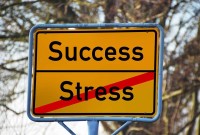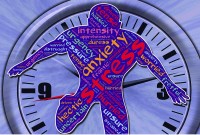- Home
- Business Processes
- Industry Knowledge
- Aerospace Industry
- Automotive Industry
- Banking Domain
- BFSI Industry
- Consumer/ FMCG Industry
- Chemicals Industry
- Engineering & Construction
- Energy Industry
- Education Domain
- Finance Domain
- Hospitality Domain
- Healthcare Industry
- Insurance Domain
- Retail Industry
- Travel and Tourism Domain
- Telecom Industry
- Leadership Skills
- eLearning
- Home
- Leadership Skills
- Change Management
- Symbolic Interaction and Social Change
Symbolic Interaction and Social Change
George Herbert Mead, an American philosopher, affiliated with the University of Chicago founded the theory of symbolic interactionism. A major aspect of this is that people interact by symbols both verbal and non-verbal signals and every interaction makes a contribution to the mental make-up of the mind thus every interaction with someone, changes you and you go away a different person signifying that humans and change go together.
George Henry Mead, of Chicago University, lectured much and wrote very little. His ideas were so powerful that his students felt the need to take detailed notes and produced his material so that we, after his death, can reflect upon it. He gave rise to a sociological and psychological theory, academically known as 'symbolic interactionism'. Symbolic interactionism also referred to as the Chicago sociological tradition.
Dynamic Human Experience
According to Mead, the mind is not just reducible to the neurophysiology of the organic individual but is emergent in "the dynamic, ongoing social process that constitutes human experience. In every waking moment, we humans are taking new impressions of the world around us and rearranging the old impressions in the light of the new. Mead states that "the self is a social process," meaning that there are series of actions that go on in the mind to help formulate one's complete self, and hence there is no such thing as stability. Several significant schools of philosophic thought have stressed this.
The Constant Change Process
We are all the time taking into our minds new impressions through the senses. We see things, we hear things, we touch things, we taste things, and beyond that, we have feelings about the messages our five senses bring to us.
These impressions make us sad, happy, impatient, excited, worried, angry, uplifted, determined, uncertain, jealous, envious; they make us love, hate, sympathize, empathize, co-operate, oppose, fight; and these emotions, being stirred, provide us with energy and impel us to action. All these impressions and the emotions they stir are recorded in our memories.
All these related emotions are written down in our human audio-video brain machines and this data keeps on evolving all the time. As more ingredients come into the mind, so the earlier ones seem just a little different- they are expanded and perceived in a new light. Human memory is also selective and the entire recordings that we have done over time do not make its presence felt consciously all the time. Most of it is buried in the depths of the unconscious and sometimes get triggered by new events. We have an exciting picture of the human mind as a flow of impressions, and emotions, and ideas that connect them. The thinking we do about impressions is part of the change process.
Human Life as Interaction
As we are constantly developing new connections hence we are constantly changing them as well. Hence change is the microsecond by microsecond essence of living. It is important to understand that this way, change actually fits with the very structure of our minds and of our thinking. Hence the principles of change management discussed in this section and the need for a change mindset should not be difficult to absorb.
A major aspect of it is that people interact by symbols - words and non-verbal signals in particular. Every interaction makes a contribution to the mental make-up of the mind. When you have had an interaction with someone, you go away with a different person. You have each added something to the other.
Mead made a distinction between the 'I' and the 'Me'. The 'Me' is the accumulated understanding of "the generalized other" i.e. how one thinks one's group perceives oneself etc. The 'I' is the individual's impulses. The 'I' is self as a subject; the 'Me' is self as an object. Mead described each individual as having of being a central 'I' around which a whole lot of 'me s'-- less stable and derived from the interactions with others were revolving. The 'I' then constantly reacted to all these constantly changing 'me s' and absorbed them into itself.
Take the example of the social act of economic exchange. In any exchange, both buyer and seller must take each other's perspectives towards the object being exchanged. The seller must recognize the value for the buyer, while the buyer must recognize the desirability of money for the seller. People who have influenced us have changed us. Once you have read this article, as a result of this interaction, are will be a slightly different person from the one you were a few moments ago.
So being human and change go together and this should make the quest of this unit easier.
A Positive Approach to Change
The task of the business or any commercial enterprise is to make better things, using less of the effort and resources. Management is designed to maintain the highest rate of change that the organization and the people within it can stand. Yet even when we acknowledge all this, we are prone to resist change. We fear it; we avoid it and we sign for the status quo.
These perceptions of what is to be human can help us to take a positive approach to change and make it work to our advantage and to that of our enterprise. You are only really alive when you are changing. Change is the essence of personal growth, it is the basis of relationships with other people, and without it, there is no learning and no progress.
Related Links
You May Also Like
-
A manager or an employee in an organization who is experiencing a high level of stress may develop high blood pressure, ulcers, irritability, difficulty in making routine decisions, loss of appetite, accident proneness, and the like. These can be subsumed under three general categories, physiological, psychological, and behavioral symptoms. Stress can give rise to a number of changes.
-
Stress is an essential part of our life. No one can live without stress. Stress can be beneficial as well as harmful. Stress as a positive influence adds excitement and hope while as a negative influence it can result in destructive feelings, anger, and depression. Although the general orientation to stress is to consider unfavorable outcomes, yet one must have observed that stress experiences may also facilitate the development of effective and varied coping behavior, increased personal resources, and lead to a sense of competence in development. Stress at a moderate level is not only inevitable but may be useful for physical and mental well-being.
-
Stress is a product of the busyness of modern life. It has assumed grave dimensions ever since the emergence of industrialism. In fact, stress is a natural, ongoing, dynamic, and interactive process that takes place as people adjust to their environment. Stress can be brought about by positive or negative life events. Distress can cause disease and eustress or positive stress can promote wellbeing and increased productivity. Learn to recognize and be responsible for your stress, and learn the ways to manage stress.
-
Crisis leadership is a very important part of leading in today's world. The skills a leader needs in order to guide people during a crisis are different from the skills needed to help a group grow. Are you a good crisis leader? What is your leadership style in case of a business crisis situation? A business crisis can test the strongest of leaders, read this article to explore how to ensure you’re ready to take action and weather the storm when one strikes you.
-
Evidence of the medically damaging symptoms of work stress necessitates applying the treatment of stress management. Stress management is increasingly drawing the attention to the management experts not only as a remedial measure but also as a way to resource management. If the workplace can be made a little more lovable the increase in the achievement of the organization may be much time more. If group stress can be removed by introducing group discussions and recreational facilities a long-lasting team spirit may get developed.
-
Change & Culture of Innovation
Predicting the future is a tricky business but managers need to have a future perspective in order to take business advantage and remain competitive. They need to drive and introduce constructive change to the business of the enterprise. The first step to creativity and innovation is to drive a culture of Innovation. Managers need to focus on developing future mindset all the time to keep pace with the unfolding future.
-
We define Lean as the systematic elimination of waste through a continual effort to decrease inefficiency; the lean leader strives to create a more efficient organization. Lean leadership is a philosophy. It is a consistent way of thinking and being in your role as a leader. The focus of this approach is on raising new leaders and help their team embrace a culture of continuous improvement. Learn what we mean by lean leadership style and its principles.
-
In today's innovation-driven economy, understanding how to generate great ideas has become an urgent managerial priority. Managers need to encourage and champion ideas and need to help their organizations incorporate diverse perspectives, which spur creative insights and facilitate creative collaboration by harnessing new technologies. Innovation is the embodiment, combination, and/or synthesis of knowledge in original, relevant, valued new products, processes, or services.
-
David Kolb produced this popular model for learning in 1984. The model suggests four stages of learning which most learners go through in order to learn effectively. Leaming is itself a process of change. Something is added to our perception and prepared us for the next impression, which will change our understanding yet more, however minutely. The Kolb contribution is a significant one because it practically equates change and learning.
-
Many different types of teams have been identified by social scientists. Managers may encounter the diverse types of challenges while managing different kinds of teams. Challenges associated with Cross-Functional Teams might be different from that of a Geographically Dispersed Team or a Virtual Team. This article explores some common categories and subtypes of teams.
Explore Our Free Training Articles or
Sign Up to Start With Our eLearning Courses

About Us
Learning
© 2023 TechnoFunc, All Rights Reserved










